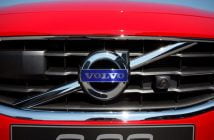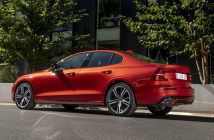+++ A new ALFA ROMEO Mito is on the cards as the Italian firm prepares to rapidly expand its line-up over the next few years. Brand boss Jean-Philippe Imparato has confirmed that there will be a new car every year until 2030 under new owner Stellantis. A small SUV, dubbed the Brennero, will arrive by 2025, plus there will be replacements for the Giulia and Stelvio, as well as the anticipated return of the GTV coupé. A new supermini is also being primed to give a new entry point to the brand while sensibly utilising technology available from elsewhere in the Stellantis empire. The original Mito, launched in 2008, went off sale in 2019 in light of declining demand for 3-door models. At the time, European boss Roberta Zerbi explained: “The Mito is a 3-door and people are choosing more and more 5-door cars”. The upcoming supermini, then, will inevitably have 5 doors to maximise sales and could sit on 1 of 2 platforms. The first is that of the new Fiat 500e, which was developed primarily for the electric city car and will need to be used elsewhere to justify its development. However, the e-CMP platform used by the Peugeot e-208 and Opel Corsa-e is more likely, as its proportions are evidently ideal for superminis. The new Mito will be electric-only as Alfa Romeo ramps up to ditch internal combustion entirely from 2025. It is likely to echo the set-up of the e-208 and Corsa-e, which use a 50kWh battery and one 1346 hp motor for about 335 km of range. Alfa Romeo UK boss Damien Dally stopped short of confirming that a new supermini is coming but said: “The brand has a history of selling compact sporty cars, like the Alfasud, and it’s an interesting area of the market that’s high-volume and gives us a much wider offering. “The Mito was a 3-door car, but if it had had 5 doors, the market would have been so much bigger. The next step in the path to electrification is full electric, and compact cars blend well with that and use the car that’s most suitable to your needs”. Pigounakis flagged the shrinking number of cars sold across the industry and the need to look at other avenues, despite MG’s recent success. “A lot of that shrinking volume is down to Covid, but it will be interesting to see whether the market ever comes fully back”, he said. +++
+++ Last August, AUDI showed us its Skysphere concept, the expandable, open-topped GT. One month later, the limousine format Grandsphere concept glided out. With the imminent debut of Audi’s Ubansphere concept, the Ingolstadt brand’s 3-sided glimpse into the future of luxury electric, autonomous and connected travel is just about complete. Whereas the digital nomads will continue astride their digital camels, the Urbansphere wants to transport dedicated urbanites through the already unavoidable megalopolis congestion. The shaded image gives us Audi A2 vibes, harkening back to the tiny and ahead-of-its-time subcompact minivan released in 1999. Fiddling with the teaser image wouldn’t reveal whether the Urbansphere wears a flat hatchback akin to the A2; even if so, we’d expect the Urbansphere to be quite a bit larger and far more overtly technical. Even though we like the comparison, pairing the 2 would be a mistake, according to Audi head of brand Henrik Wenders. He’s recent hire who’s been working with design chief Marc Lichte on turning Audi’s future visions into sheetmetal. Despite the minivan-ish appearance, Wenders told the Urbanshpere is not a one-box design. Lichte was said to be sticking with familiar and sporty design cues that will here result in “a bodytype that’s never happened with Audi and it’s damn good looking!” Wenders added: “From the inside it’s a completely breakthrough way of designing and thinking about” such a space that, and in a way that has been taken to the most condensed level”. With the Auto Beijing canceled this year thanks to continuing covid flare-ups in China, Audi plans to reveal the Urbansphere online on April 19. Rear suicide doors, living-room ambience on command, starship pod ambient lighting, lots of novel, digitally interactive options and many surprises coming your way. +++
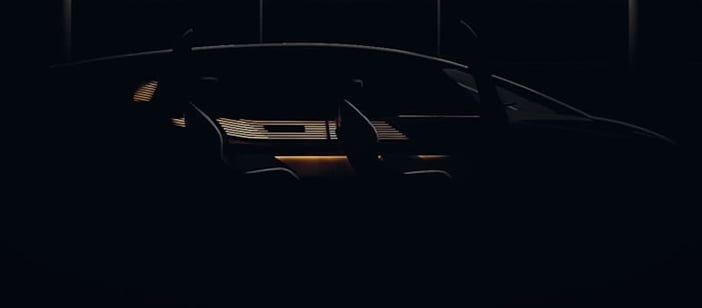
+++ CHRYSLER is once again teasing its battery-electric Airflow concept. The company has issued a new image ahead of its official debut at the New York Auto Show later this week. The rendering, as well as language in the accompanying release, indicates that Chrysler may have redesigned the concept before a production version even hits the market. The latest image shows a long, thin light bar at the Airflow’s nose, with acute angles just before the headlight to create a bit of a “lightning bolt” zig-zag. There’s also a wide, U-shaped graphic below the bar, and a “grille” featuring a pattern of slits that surrounds the bar. Previous Airflow images from Chrysler (released as recently as January at CES) have shown a very different front end. There, a differently shaped bar was broken up by a stylized Chrysler logo, done up in an outline of the traditional wings. The ends of the bar extended to the edges of the headlights without any sharp angles. It also appeared to have a different grille texture above and below the bar. “Chrysler will unveil a new look for the brand’s all-electric Chrysler Airflow Concept at the 2022 New York International Auto Show”, the press release states. The same statement also refers to “a potential design path on the brand’s journey to an all-electric future”. The Airflow is the latest in a slew of luxury models promised by automakers trying to re-invent their brands by going electric. It is named after the revolutionary 1934 Airflow, the first automobile to employ aerodynamics in its design. Though not a commercial success, it is credited with forever changing automotive styling principles. Although EVs are no longer avant-garde, Chrysler seems to hope that the new Airflow will make as dramatic a change in the industry, or at least revive the brand. +++
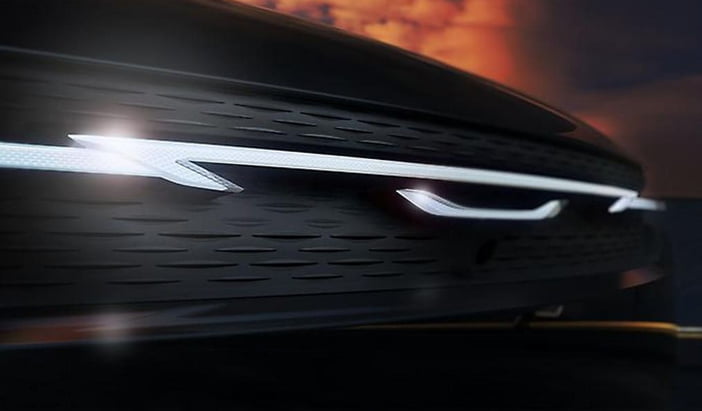
+++ MERCEDES-BENZ aims to halve its CO2 emissions by 2030, the carmaker said, providing a half-way goal to its existing target of becoming CO2 neutral by 2039. The company will also work towards covering 70% of the energy it needs for production with renewable energy by 2030, up from 45-50% at present, it said. Around 15% of this energy should come from solar and wind plants on or linked to Mercedes-Benz’ own sites, production chief Joerg Burzer said in a presentation. The rest will be sourced through so-called Power Purchase Agreements (PPAs), where power producers are paid to generate a certain amount of energy over a number of years at a set price. The carmaker is in advanced discussions to purchase additional wind energy through PPAs worth 1 billion euros by 2025, Burzer added. For now, Mercedes-Benz still relies on gas as a back-up supply source. “We obviously still need the gas,” Burzer said. “We are working on minimizing that”. +++
+++ All things being equal, choosing an electric vehicle over one with an internal combustion engine is likely to be a better move for the planet, thanks to motors that don’t spew greenhouse gases while underway. But all things aren’t always equal: Battery-powered cars and trucks tend to be far heavier than their gas-burning counterparts. That extra bulk translates into a mixed bag of benefits and concerns, especially when it comes to SAFETY . The occupants of heavy vehicles tend to fare better in an accident, explained Michael Anderson, the University of California professor who co-wrote the study “Pounds That Kill: The External Costs of Vehicle Weight”. “Really what it’s doing is essentially pushing the other vehicle that you crash into out of the way and subjecting you to gentler deceleration forces”, he said. At the time of his study, 2011, Anderson was concerned about what a tide of SUVs and super-sized trucks would mean for road fatalities. And he was prescient; in the years since, U.S. road deaths have surged in step with the average weight of the American vehicle. Anderson was less concerned with electric vehicles, because he figured the batteries would show up first in hatchbacks and sedans like the Nissan Leaf and the Tesla Model S, another thesis that panned out. In the next few months, however, the safety landscape will change drastically, as several huge and heavy electric vehicles hit the streets. By the end of the year, about 18 new battery-powered SUVs and pickup trucks will be available for U.S. buyers to choose from. “What matters is less the average weight than the heterogeneity”, Anderson says. “There could be a window where it’s pretty unsafe to be driving (small, gas-powered vehicles) and getting into multi-vehicle accidents”. Consider the GMC Hummer EV, which tips the scales at 4.000 kilos, roughly the equivalent of 2 Chevrolet Silverado pickups. It’s hard to imagine any collision it might be involved in as minor. Ironically, as more drivers choose massive trucks over family cars, some consumers who prefer smaller cars are turning to trucks as a form of defense. Despite the extra pounds, most of the current crop of electric vehicles decelerate at distances in line with (and sometimes better than) similarly sized gas vehicles, according to data compiled by Consumer Reports. There are a few reasons for this. Carmakers are fitting many of these vehicles with larger brakes, for one. Secondly, electric vehicles have regenerative braking systems in which the electric motors slow the machine slightly while generating power. Brembo, which supplies many of the brakes to carmakers, says the regenerative systems often entirely compensate for the additional weight, which is typically at least 10% more than that of a similar combustion vehicle. Finally, electric cars tend to have better weight distribution and lower centers of gravity than gas-powered cars, thanks to the ponderous battery sealed under the floor of the machine, so braking power is spread more evenly among the four wheels and the tires have more friction with the road. “It all counteracts the additional momentum”, says Jake Fisher, an engineer who leads auto testing at Consumer Reports. “In a physics equation, it cancels out”. On Polestar vehicles, regenerative braking via the motor handles much of the deceleration, including in relatively sudden stopping situations, Christian Samson, head of product attributes, said in an e-mail. Even so, its engineers did not factor that into their equations when deciding how big the brake pads should be. “Friction brakes are dimensioned and capable of handling all of the vehicle’s braking despite having the regen system, which, in reality, handles the bulk of the deceleration”, Samson explained. Audi engineers say the regenerative systems on its current electric vehicles handle up to 95% of slowing and stopping, including about 30% of the deceleration in an emergency situation. The Audi e-tron, for example, stops more quickly than the company’s Q7 SUV, according to Consumer Reports, despite being 14% heavier. In fact, the e-tron brakes are used so little that Audi had to design a special protocol to keep the pads from getting corroded. Of course, stopping distance is only pertinent when brakes are engaged. If the pilot of a mammoth EV accidentally steps on the accelerator, isn’t paying attention or can’t see the vehicle’s path very well, its full mass will come to bear, situations that may be exacerbated by the violently quick acceleration most electric motors are capable of. There are about four pedestrians killed by pickup trucks making a left turn for every fatality caused by a conventional car in the same situation. The Insurance Institute for Highway Safety blames poor visibility and links the decade-long surge in pedestrian fatalities to steadily bulked-up vehicles. The problem has caught the attention of federal regulators. In March, the National Highway Traffic Safety Administration proposed updating its five-star safety ratings program for new cars. If the change is made, automakers, for the first time, would have to build with pedestrians in mind to get high marks. What’s more, researchers have found a direct correlation between pedestrian fatalities and the weight of the offending vehicle. Equally troubling, the blind spot in front of hulking pickup truck hoods can be up to 11 feet longer than that of sedans, according to a recent Consumer Reports study. The insurance industry, however, is sanguine about the mass market transition to EVs. Janet Ruiz, director of strategic communications for the Insurance Information Institute, said EV pilots tend to have cleaner driving records than their petrol-powered peers; specifically they speed less and log fewer miles. A 2020 study from the Highway Loss Data Institute found that electric vehicles were tied to roughly 20% fewer claims than similar vehicles running on gas, although the severity of their claims were slightly higher. As for the Hummer, its stopping hardware was considered just as carefully as its 0-100 acceleration. General Motors spokesman Chris Bonelli said the truck has an “upsized, robust” brake system, a full suite of active safety features like reverse automatic emergency braking and torque vectoring, a technology developed in sports cars that, at least in some cases, could help the 1.000 hp pick-up steer around potential collisions. +++
+++ It’s almost 10 years since TVR chairman Les Edgar joined the iconic British manufacturer to head up its new era, but the project has been marred by delays and uncertainty around its new sports car, the Griffith. The problems can be attributed to a couple of factors: the Coronavirus is one, but another is the premises in which the new TVR Griffith will be built. TVR plans to produce it in Wales at a plant in the Ebbw Vale area, but the need to reconstruct the facility has delayed the launch. Since the Welsh government owns a three per cent stake in TVR, with a complicated deal in place when it comes to ownership of property related to the project, there’s an incentive for the country to ensure the project comes to fruition to pay back its taxpayers. And now, TVR has pledged to deliver its first cars toward the end of 2023, once the factory is completed. TVR is primed to recruit and train staff to produce the new sports car to reach this goal, and Edgar, alongside CEO Jim Berriman and operations director John Chasey, recently spoke to the media to explain the current state of the project. Speaking on the early Griffith prototype that hit show stands in 2017, Edgar asserted: “If we hadn’t done what we did, take a brave step and leapfrog a few stages you would normally go through before you produce a road-going thing that you can drive around a track and take up and down the road; had we not done that, we would be in a lot more of a state in terms of timing”. According to TVR, building a fully working prototype of the upcoming sports car was key to giving customers, investors and stakeholders faith in the project. “We can jump in it and say: ‘We’ll bring the car to you’. You can hear it and see it and feel it and drive it. And I think that’s made a huge difference in terms of promoting it”, said the chairman. “Especially if you speak to someone not in the industry. You can’t show them a mule car”, added Berriman, who helped bring the Land Rover Freelander and L322-generation Range Rover to production during a stint at Rover Group. With a 5.0-litre V8 engine from Ford and a Gordon Murray derived iStream chassis, the Griffith has taken significantly less R&D than a bespoke, ground up vehicle in order to come to fruition. However, the key sticking point is actually building the car; the Ebbw Vale factory where it’ll be produced remains a work in progress, although the end is in sight according to the firm. Edgar admits “It’s rarely a case of ‘they must be doing brilliantly because they’re not saying anything’. The key thing is everything takes longer, from deciding how to do the car with Gordon Murray to working with shareholders”. The factory is being provided by the Welsh Assembly, but red tape around state funding has delayed its completion. What was initially a refurbishment of the facility became a longer rebuild which began in 2020, and strangled TVRs investment prospects, according to Edgar. “We got into a bit of a chicken-and-egg scenario. We explained that our investment case would be more attractive if work was already underway with the factory, and it took more time to get agreement that work could start ahead of our next round of investment and recruiting staff”. The firm told that progress of the rebuild would see TVR gain access to the plant in the first quarter of 2022, but whether this has happened is unknown. “We’re currently finalising how many prototypes we need”, says Berriman. “We need to drive one into a wall, but we’ll also need one for airbag and ABS testing, for example, that will need to be sent to a supplier (most likely Bosch) plus hot and cold weather test cars, powertrain, etc”. For a small manufacturer, building a prototype for each of these tests is unviable, so each car will take on multiple development roles. The one-off show car took many hundreds of hours to create, but TVR must cut this down to tens of hours for customer cars. Quality must be up to standard too, said classic TVR owner Edgar: “A car not starting or a door falling off is not acceptable. This was our starting point. It’s why we are using proven components rather than trying to reinvent the wheel by, say, designing and manufacturing our own switchgear. Yes, it will look and feel like a bespoke component, but the switch will be from an OEM supplier, which will have been tested beyond anything we can better”. +++
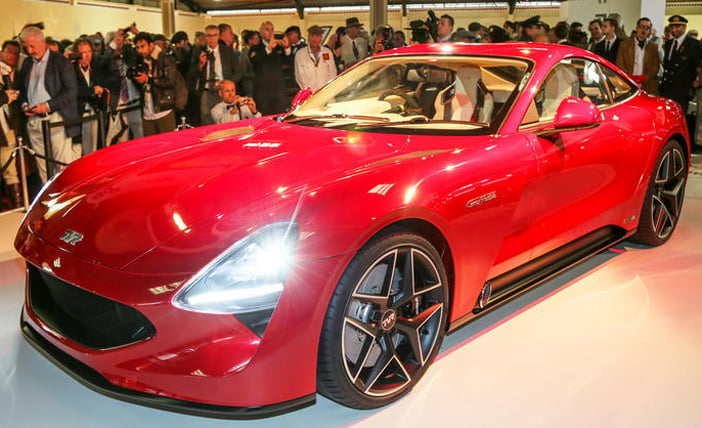
+++ More VOLVO customers can now reap the benefits of over-the-air (OTA) software updates. The Geely-owned carmaker has brought OTA capability to the latest XC90, S60 and V60 models, following the introduction of the tech to its electric vehicles. As a result, all models in the Volvo range from the 2023 model year onwards will have OTA capability. The company says OTA updates can now reach over 190.000 cars across 34 countries. New markets receiving remote software tweaks from this week include India, Taiwan and New Zealand. Volvo’s latest update includes various infotainment system improvements. Changes include an upgrade to the Android 11 operating system for the infotainment suite, and the arrival of new app categories on the Google Play app store. Video streaming capability will be added later in 2022. The newest update is claimed to make Volvo’s fully-electric cars and plug-in hybrids more efficient, with the aid of better calibrated climate timers for vehicle preconditioning. Drivers will also be given more frequent charge percentage updates whenever the car is plugged in. Volvo has also announced that its infotainment system, which is jointly developed with Google, is now offered on all of its new models. Speaking about the improved OTA offering, Volvo chief product officer Henrik Green said: “By making all Volvo models able to receive over-the-air updates, we make important progress towards our ambition of making our customers’ cars better every day. This is a significant milestone: we’re now updating cars of all models in a majority of our markets, bringing the benefits of remote continuous updates to an ever-increasing number of customers”. +++

